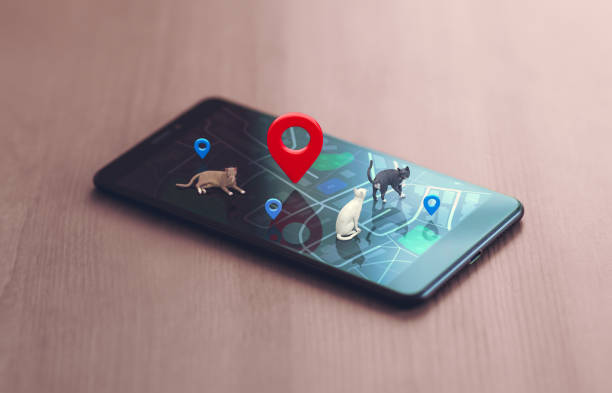
NEWS
Mini Tech, Big Protection: The Rise of Compact Pet GPS Modules
In today’s fast-paced world, our pets are not just animals; they are beloved family members. Yet, even with the most careful supervision, accidents happen—doors are left ajar, fences fail, or pets follow a scent trail too far. Every year, millions of pets go missing, creating emotional and logistical chaos for their owners.
However, modern technology is rewriting this story. The rapid evolution of pet GPS modules has introduced a new era of intelligent tracking, offering peace of mind and real-time location data in a compact, efficient form. As electronics continue to shrink and connectivity improves, these modules represent a convergence of innovation, safety, and human–animal bond preservation.
The Evolution of GPS Tracking for Pets
GPS technology, originally designed for military and industrial use, has become a core part of daily life—from smartphones and cars to fitness devices. The miniaturization of components, driven by advances in chip integration and antenna design, has now extended this capability to pet care.
Earlier generations of tracking devices were bulky, power-hungry, and uncomfortable for small animals. They required frequent charging and offered limited signal stability, especially in rural or indoor environments. Today’s compact pet GPS modules overcome these challenges through efficient circuitry, low-energy communication protocols, and enhanced sensitivity.
By merging GNSS (Global Navigation Satellite System) with cellular, Wi-Fi, and Bluetooth positioning, these modules deliver continuous tracking even when satellite visibility fluctuates. This hybrid approach has transformed GPS collars and wearable tags from niche accessories into mainstream pet safety essentials.

Miniaturization: The Core of Modern Design
At the heart of the pet tracking revolution lies miniaturization. Engineers have reduced once-complex navigation hardware into modules no larger than a coin. These mini modules integrate multiple functions—antenna, positioning chip, accelerometer, and communication module—within a compact, lightweight shell.
Such size reduction has opened doors for design creativity. Now, GPS devices can be seamlessly embedded into collars, harnesses, or ID tags without causing discomfort or restricting mobility. Moreover, smaller form factors make the technology accessible to owners of cats, small dogs, and even exotic pets like rabbits or ferrets.
Miniaturization also means reduced material usage, lower production costs, and improved durability. Through system-on-chip (SoC) integration and surface-mount design, manufacturers achieve reliable performance with minimal footprint—proving that big protection can indeed come from small technology.
Power Efficiency and Long-Term Reliability
Battery life has long been the Achilles’ heel of wearable devices. For pet owners, constant recharging undermines convenience and usability. Compact pet GPS modules now tackle this issue through advanced power management algorithms and low-consumption chipsets.
Modern modules leverage low-power GNSS receivers and energy-efficient communication protocols such as NB-IoT (Narrowband Internet of Things) and LTE-M. These networks transmit data over long distances while consuming a fraction of traditional cellular power. Furthermore, smart sleep modes allow the module to enter standby when the pet remains stationary, conserving energy until movement is detected.
Some manufacturers even integrate solar-assisted charging systems or high-density lithium polymer batteries for extended use. These innovations ensure that owners can monitor their pets for days or even weeks without interruption, blending reliability with practicality.
Precision in Motion: The Power of Multi-Source Positioning
One of the most significant technical leaps in pet tracking lies in multi-source positioning. Instead of relying solely on GPS, compact tracking modules combine multiple data channels for greater accuracy.
For instance, in open fields or parks, satellite signals provide direct coordinates with precision down to a few meters. However, when pets wander into urban areas or indoors—where buildings obstruct satellite visibility—the module automatically switches to Wi-Fi triangulation or Bluetooth beacon proximity.
Some advanced pet GPS modules even integrate IMU (Inertial Measurement Unit) sensors, allowing motion prediction based on acceleration and direction data. This fusion of data ensures continuous tracking and smooth transitions between positioning modes, creating a truly seamless monitoring experience.
Connectivity: Real-Time Awareness for Modern Pet Owners
Compact pet GPS modules are not standalone devices; they are part of an interconnected digital ecosystem. Through mobile apps and cloud-based dashboards, pet owners can view live maps, set virtual fences, and receive instant alerts.
When a pet moves beyond a defined safe zone, geofencing triggers automatic notifications. Such features are invaluable for preventing escapes or monitoring outdoor activities. Additionally, some systems allow multiple users—family members, sitters, or dog walkers—to access tracking data simultaneously.
Beyond convenience, connectivity empowers data-driven care. Activity tracking logs, distance reports, and temperature sensors help owners understand behavioral patterns and health trends. These insights transform GPS modules from reactive tools into proactive companions for better pet management.

Rugged Engineering for Real-World Conditions
Pets are adventurous by nature. Whether splashing through puddles or rolling in mud, they expose devices to moisture, shock, and temperature variations. Therefore, engineering reliability is as vital as signal accuracy.
Leading pet GPS module manufacturers focus on IP-rated waterproofing, reinforced housings, and temperature-resistant materials. The printed circuit boards inside are conformally coated to prevent corrosion, while the antenna systems are calibrated to maintain signal strength even when covered by fur or fabric.
Moreover, compact designs reduce mechanical stress. A smaller, lighter device is less likely to snag on objects or cause strain on collars. Through rigorous testing—including vibration, impact, and humidity resistance—engineers ensure that these modules endure daily adventures while maintaining operational stability.
Data Security and Privacy Considerations
As tracking becomes more data-intensive, privacy and cybersecurity must remain top priorities. Each GPS scan transmits not only coordinates but also behavioral data. Unsecured systems could risk exposure of personal or location information.
Modern pet GPS modules address this with encrypted data transmission and authenticated device pairing. Cloud services employ secure protocols (such as HTTPS and AES encryption) to protect sensitive records. Some manufacturers go further, using anonymized IDs instead of direct user data to prevent tracking misuse.
By adopting these measures, the pet tech industry upholds consumer trust and ensures that convenience never compromises safety.
Applications Beyond Tracking: Health, Behavior, and Analytics
The modern GPS module is no longer limited to location tracking. The integration of multiple sensors has expanded its functionality into health and behavior analytics.
Accelerometers and gyroscopes detect activity levels, enabling monitoring of exercise routines or rest periods. When connected to veterinary apps, this data assists in identifying abnormal behaviors—such as reduced movement due to illness or injury.
Some pet GPS modules even measure ambient temperature to prevent heat-related stress. In multi-pet households or breeding facilities, aggregated data supports large-scale behavioral analysis, enhancing care quality and operational efficiency.
As AI-driven analytics evolve, these insights will become increasingly predictive—helping owners detect early signs of distress or changes in activity before visible symptoms emerge.
Manufacturing Challenges and Technological Precision
Creating compact GPS modules demands meticulous engineering. Every component—from micro antennas to ceramic filters—must balance precision with power efficiency. The challenge lies in fitting all functionalities into limited space without compromising signal performance.
To achieve this, manufacturers rely on CNC micro-machining, surface-mount assembly, and automated optical calibration. Each stage demands micrometer-level precision to ensure optimal electromagnetic performance.
Additionally, the growing demand for customization—such as integration with pet collars, wearable tags, or IoT networks—requires modular architecture. Manufacturers design flexible layouts, enabling easy adaptation to different form factors without redesigning the entire circuit.
Through these advanced processes, pet GPS modules achieve the ideal combination of durability, scalability, and performance.
Eco-Friendly Design and Sustainable Technology
As environmental awareness rises, sustainability becomes a key differentiator. Compact pet GPS modules are now designed with recyclable materials, energy-efficient manufacturing, and long-life components.
Low-energy chipsets minimize carbon footprint, while modular designs reduce electronic waste. Some developers also adopt biodegradable casings or renewable battery technologies to further reduce environmental impact.
In addition, intelligent energy management extends product lifespan, reducing replacement cycles. These steps align technological progress with global sustainability goals—ensuring innovation benefits both pets and the planet.
The Market Outlook: Why Demand Keeps Growing
The global pet technology market has witnessed exponential growth in recent years, driven by rising pet adoption and humanization trends. Consumers increasingly view pets as companions deserving the same technological care as humans.
Simultaneously, urbanization and mobile lifestyles have amplified the need for remote monitoring solutions. Compact GPS modules fit this demand perfectly—offering a blend of portability, affordability, and high-performance tracking.
Moreover, as 5G and IoT infrastructures expand, pet GPS modules will integrate more seamlessly into smart homes and connected ecosystems. They will communicate with digital fences, automated feeders, and cloud-based veterinary systems, forming a unified platform for intelligent pet management.
Future Directions: Intelligence, Integration, and Interactivity
The future of pet GPS technology is bright and intelligent. The next generation of modules will feature AI-based motion analysis, ultra-wideband positioning, and edge computing capabilities.
This means faster response times, enhanced spatial awareness, and on-device decision-making. For example, a module could detect irregular movement patterns and send alerts before a pet strays too far.
Integration with voice assistants or wearable cameras will further personalize the experience. Owners could issue voice commands to locate pets or view real-time footage via connected apps.
Ultimately, the evolution of pet GPS modules will align with the broader trend of smart living—where technology anticipates, protects, and enhances every aspect of companionship.
Conclusion: Small Devices, Big Peace of Mind
The rise of compact pet GPS modules embodies the essence of modern innovation—miniature form, maximal function. What once required heavy, single-purpose equipment is now achieved through a sleek, lightweight device no larger than a coin.
By combining advanced positioning systems, smart connectivity, and data-driven insights, these modules redefine pet care. They empower owners with awareness, enable safety through precision, and create a new dimension of companionship built on trust and technology.
In the end, mini tech truly delivers big protection—ensuring that wherever our pets roam, peace of mind follows close behind.